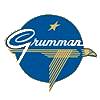
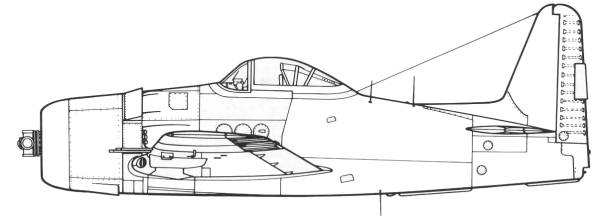
The Bearcat concept began during a meeting between Battle of Midway veteran F4F Wildcat pilots and Grumman Vice President Jake Swirbul at Pearl Harbor on 23 June 1942. At the meeting, Lieutenant Commander Jimmie Thach emphasized one of the most important requirements in a good fighter plane was "climb rate".
Climb performance is strongly related to the power-to-weight ratio, and is maximized by wrapping the smallest and lightest possible airframe around the most powerful available engine. Another goal was that the aircraft) should be able to operate from escort carriers, which were then limited to the obsolescent F4F Wildcat as the Grumman F6F Hellcat was too large and heavy. A small, lightweight aircraft would make this possible. After intensively analyzing carrier warfare in the Pacific Theater of Operations for a year and a half, Grumman began development of the Bearcat in late 1943.
There is considerable debate among sources as to whether or not the Focke-Wulf Fw 190 influenced the design of the Bearcat. It is known that test pilots from Grumman examined and flew a captured Fw 190 in England in early 1943, and the Bearcat has a number of design notes in common with the Fw 190 that the Hellcat did not, especially in the cowling and landing gear arrangements. However, no definitive evidence has been presented that these tests had a direct input to the Bearcat design. Compared to the Hellcat, the Bearcat was 20% lighter, had a 30% better rate of climb and was 50 mph (80 km/h) faster.The Navy placed a production contract for 2,023 aircraft based on the second prototype on 6 October 1944. On 5 February 1945 they awarded another contract for 1,876 slightly modified aircraft from General Motors, given the designation F3M-1. These differed primarily in having the R-2800-34W engine and a small increase in fuel capacity.
Deliveries
from Grumman began on 21 May 1945. The end of the war led to the
Grumman order being reduced to 770 examples, and the GM contract being
canceled outright. An additional order was placed for 126 F8F-1B's
replacing the .50 cal machine guns with the 20 mm M2 cannon, the
US version of the widely used Hispano-Suiza HS.404. Fifteen of these
were later modified as F8F-1N night fighters with an APS-19 radar
mounted under the starboard wing. The F8F-2 Bearcat was an improved
version, equipped with a redesigned engine cowling, taller fin and
rudder, armed with four 20 mm cannons, powered by a Pratt &
Whitney R-2800-30W radial piston engine, 293 built.
The Kit
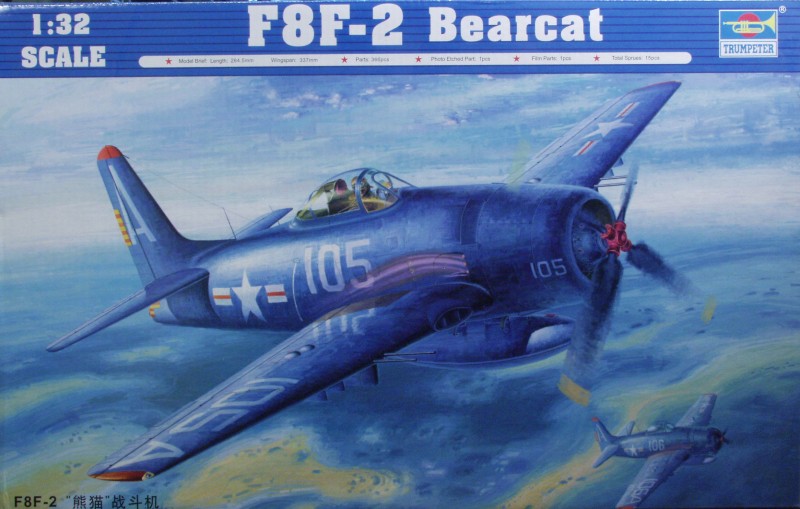
The Trumpeter kit comes in a large tray type top open box with the top from a heavy card stock and the bottom made from thin corrugated cardboard. In side the box one finds two large bags, one with two sprues and one with one, three medium sized bags, each with two sprues and two small bags with one sprue each, At one end of the box is a small internal box which contains the clear parts in separate bags, a fret of photo etch and the kits vinyl tires, also in a separate bag. The parts are molded in a light gray color and feature fine recessed panel lines, rivets and fasteners. These are not the huge divot rivets like some of the earlier Trumpeter kits. The parts are crisply molded and I found only a few hints of flash. Mold alignment was good and mold separation lines are light. I did find some ejector pin marks that will show, several in the fuselage side wall that will show as the cockpit does not have separate sidewalls, also found some light ones on the inside of the main gear struts and landing gear doors. The surfaces has a mostly glossy finish and I didn't find any surface defects on any of the air frame surfaces.
Detail wise the control surfaces are all molded separately including the flaps and fortunately there are no photo etch hinges to deal with. The cockpit is well detailed with enough separate detail parts that should satisfy most. A photo etch fret is supplied with belts and harness and an optional PE instrument panel with film which quite honestly will look better than the supplied clear plastic part. The canopy is in two parts and can be displayed open or closed. Ahead of the fire wall the engine accessory compartment has a lot of nice detail with an oil and water tank and hoses and engine bearers some of which will be visible through the wheel wells. There is also a radio rack with equipment for the area behind the pilot. The tail wheel and strut are well detailed and the bay is closed in. The engine is a model within a model comprised of over 80 parts and only needs some ignition wires to set it off. Parts are included for both early and late versions and the instructions aren't clear which to use so check your references. The cowling is supplied as a clear part if you wish to show off the engine. The wing assemblies are fairly complex as the inner wings have detailed gun bays with four separate covers each. Unlike many other kits, most reports I have seen say these fit with no hassles. The wings are designed so the the outer sections can be displayed either folded or extended. Past experience suggest that if you intend to display them extended it would be best to glue the upper and lower parts to the inner wing sections and reinforce the joints with some styrene. The landing gear are well detailed with retraction links, torque scissors and other parts. The wheel hubs are separate and the tires are vinyl. for underling stores you are supplied with two bombs, four rockets and a center line fuel tan. Lets look at the parts.
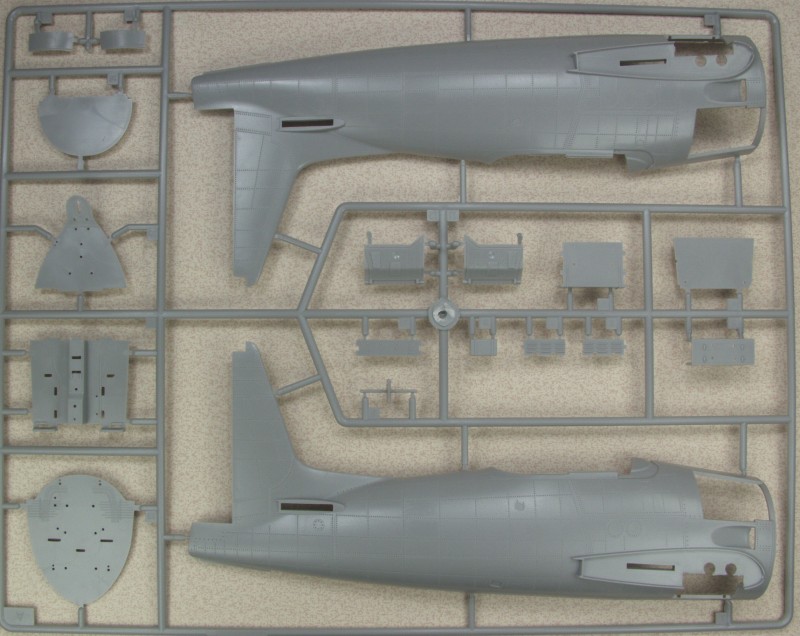
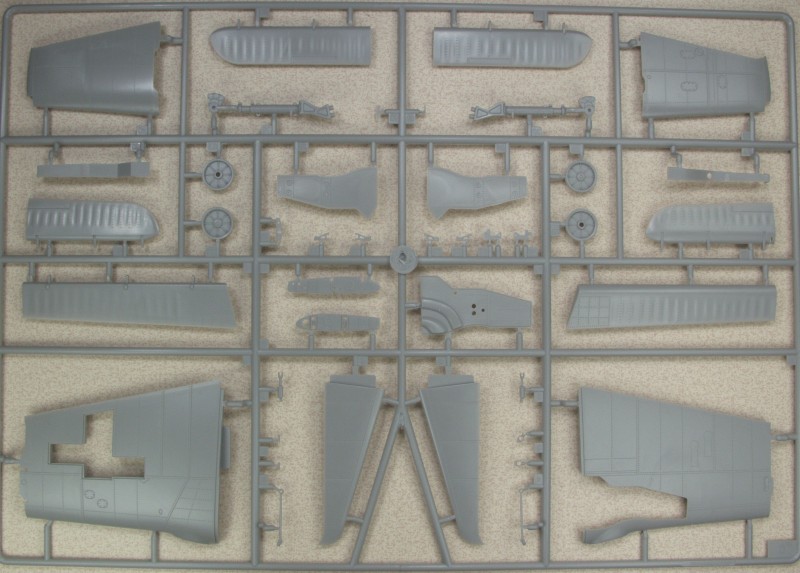
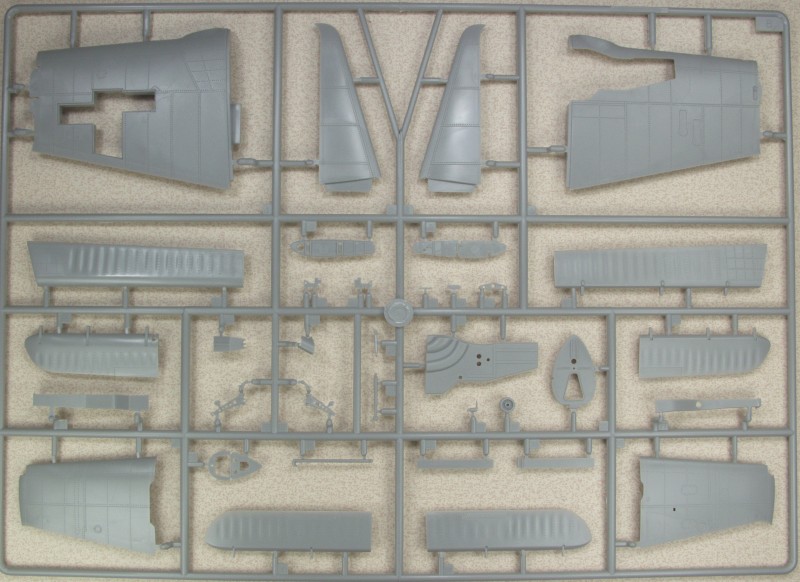
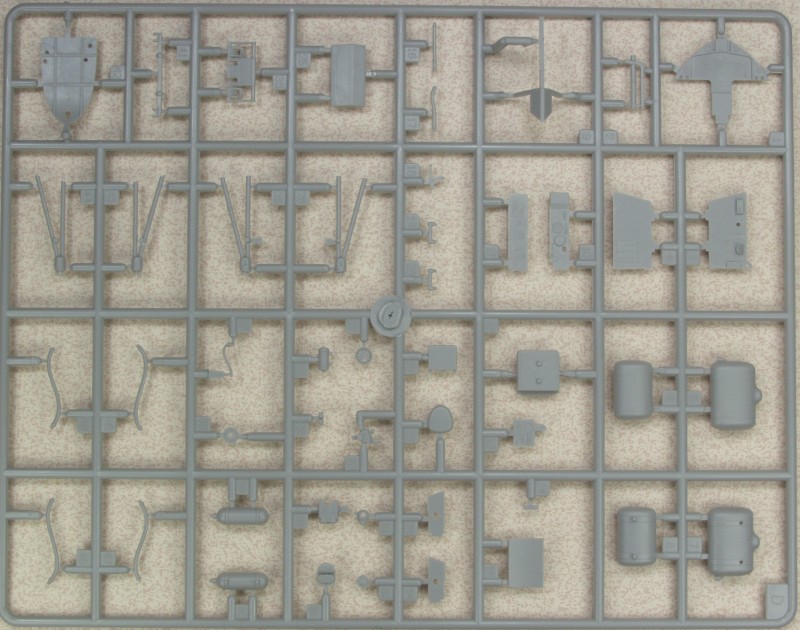
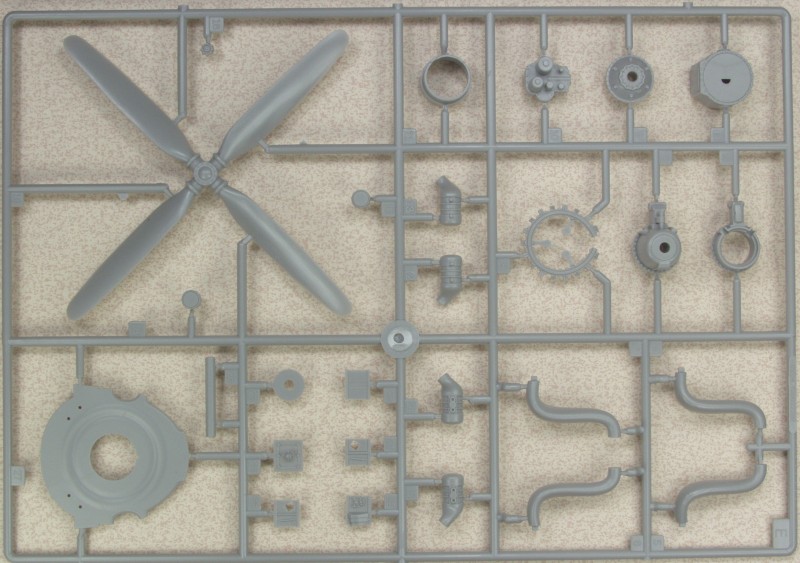
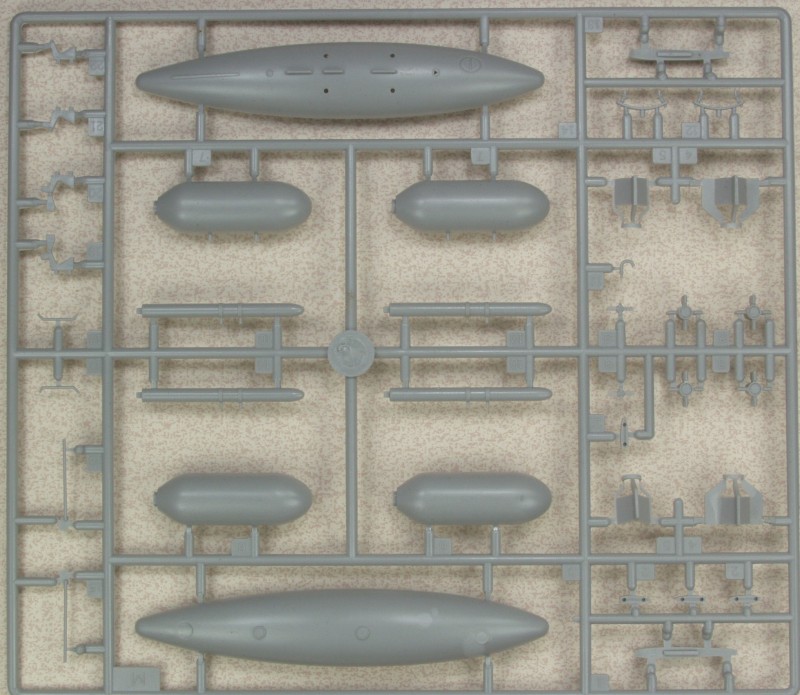
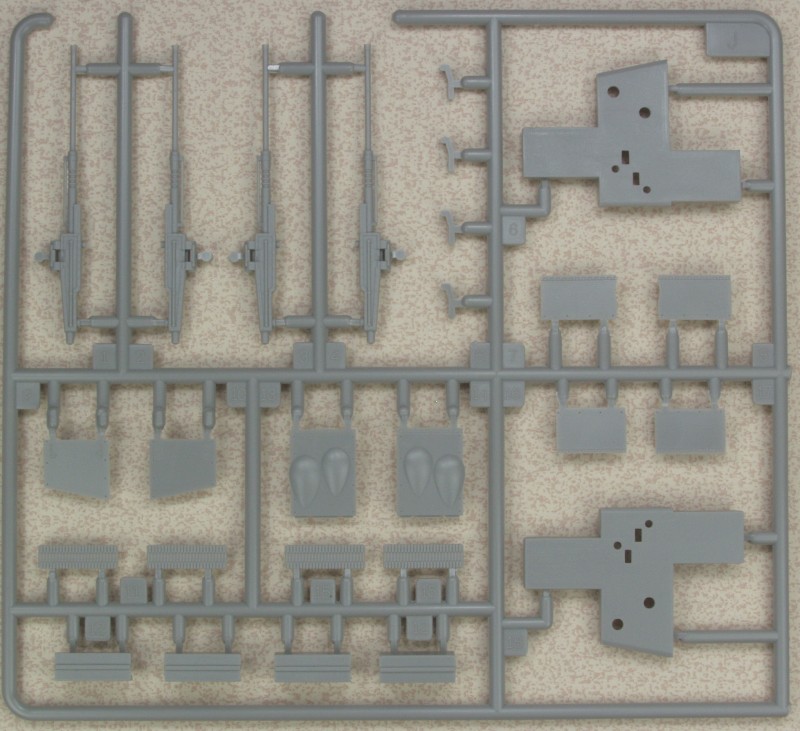
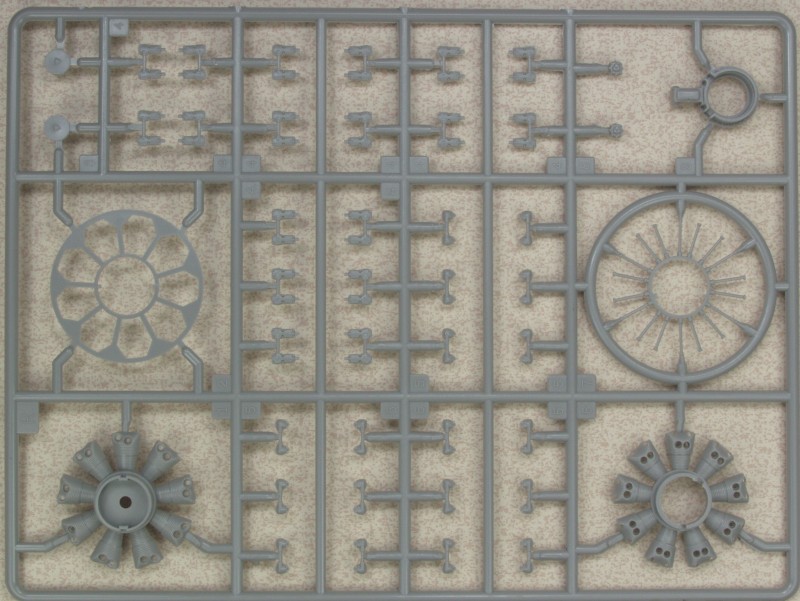
The next sprue was shipped with one area protected by a wrapping of foam which protects the rather delicate intake manifold show in the following photo.
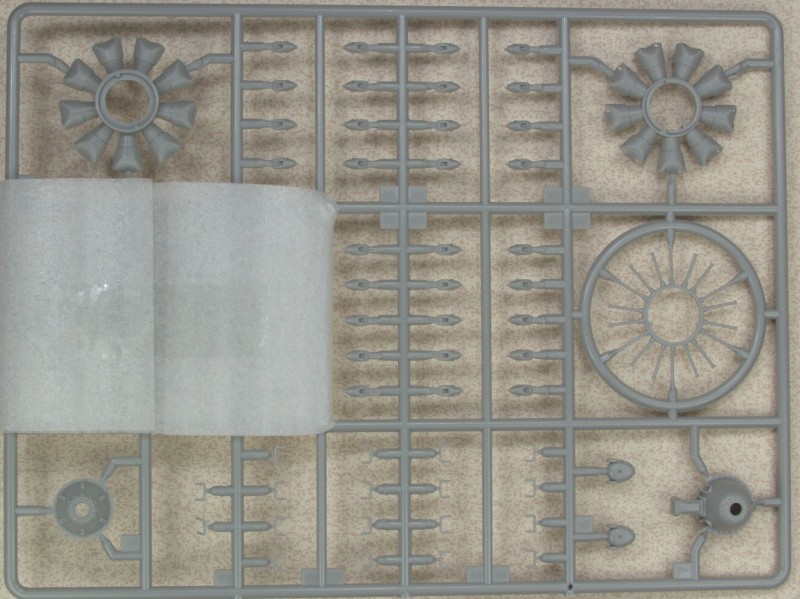
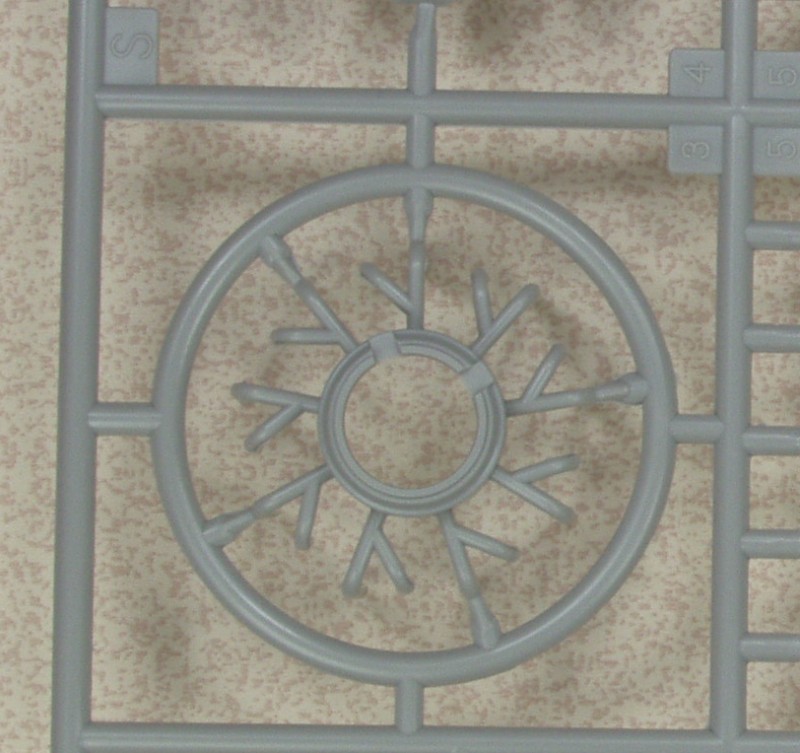
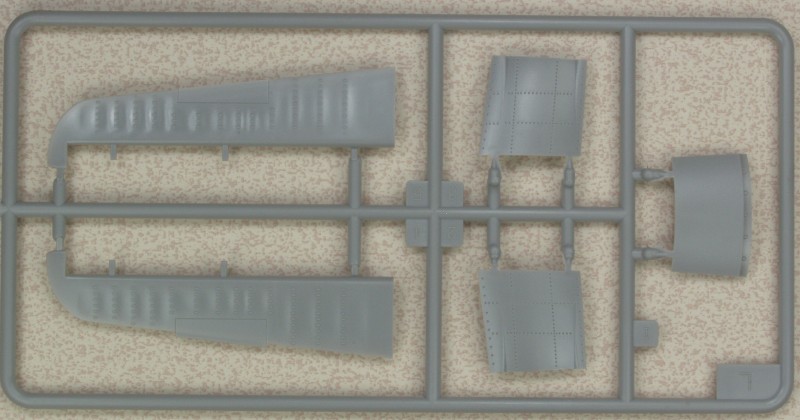

The vinyl tires.
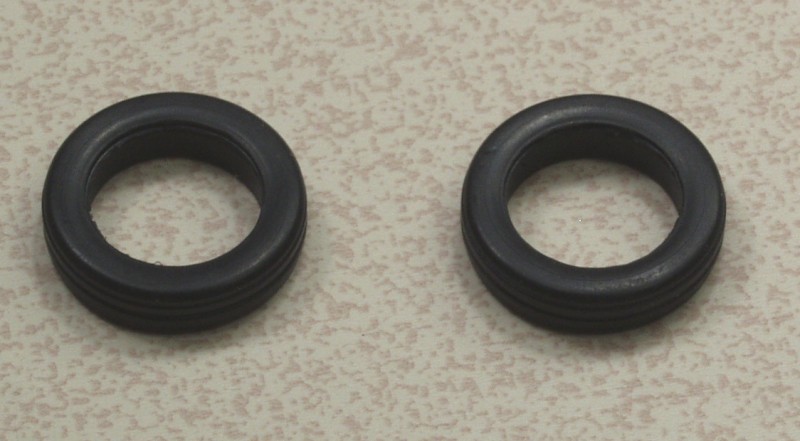
And the photo etch fret which is mostly seat belts harnesses and includes the optional PE instrument panel. Not shown in the film for the instruments.
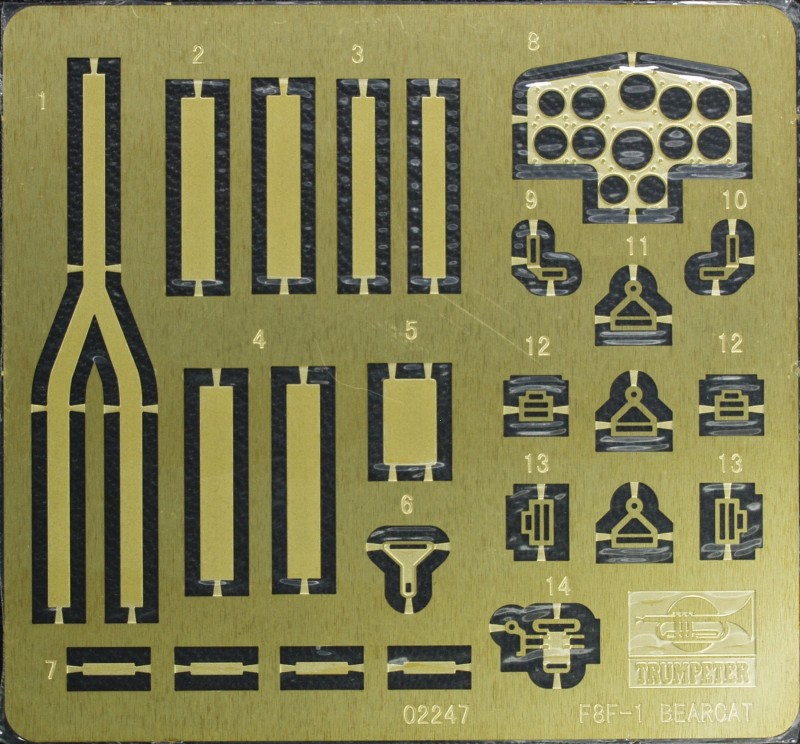
The clear parts are crystal clear and low distortion. Two instrument panels are include with only very minor differences and I assume one if for the early -1 version.
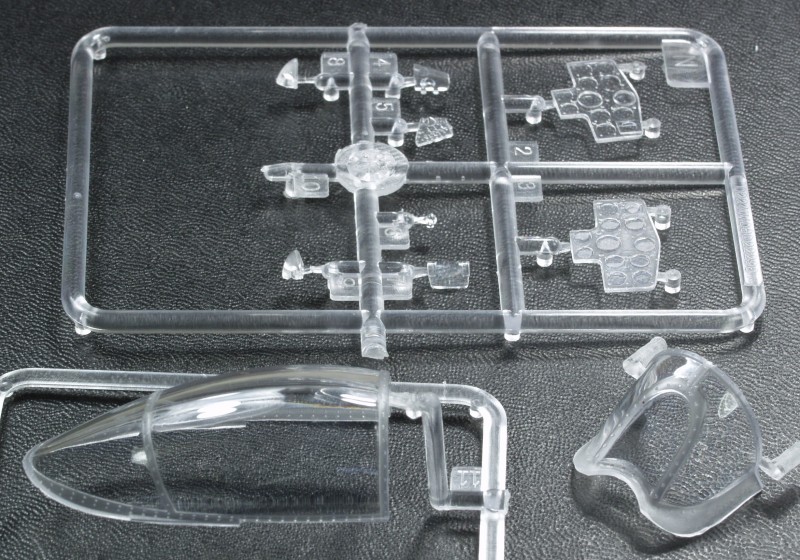
The clear cowling is reasonably clear in the area where it needs to be for those inclined.
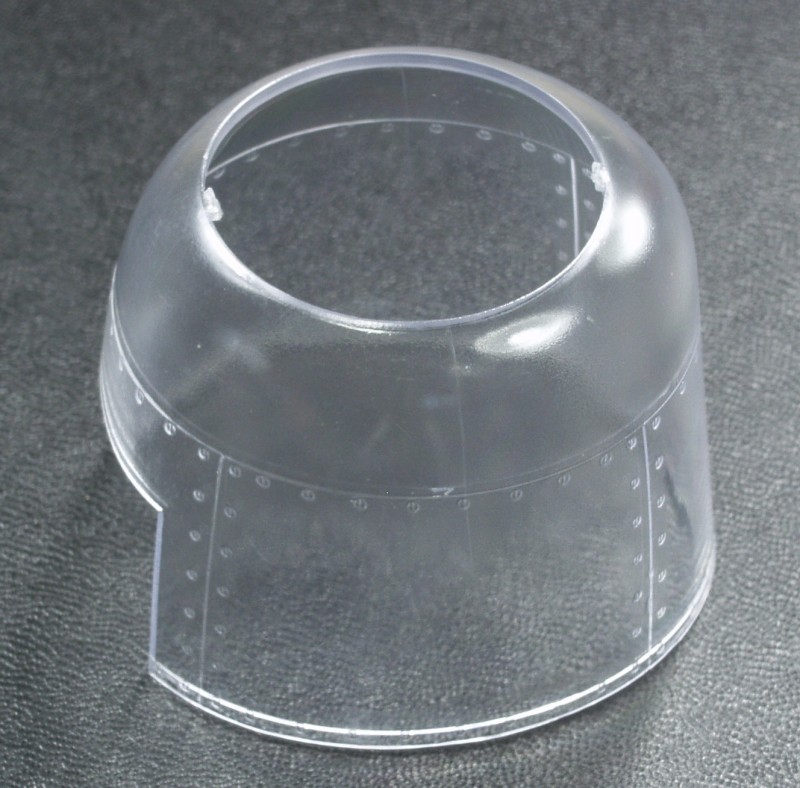
The decals are quite thin and glossy but I question how opaque the white ones will be over a dark blue finish. A fair number of stencils are supplied. Markings are included for two aircraft; VF-151, U.S.S.Boxer (CV21), 1952 and the second which is just labeled U.S. Navy Bearcat No. 122637, 98F.
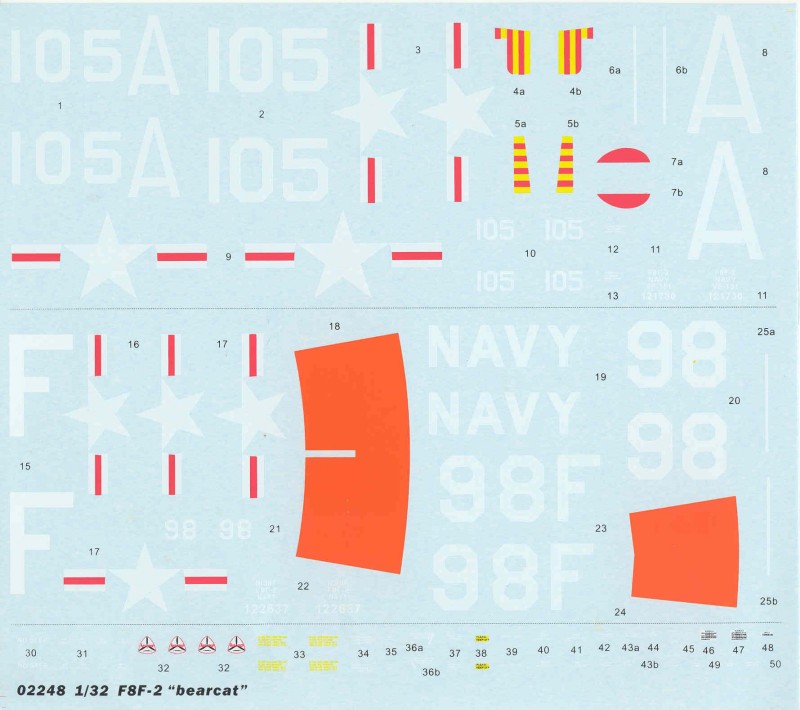
The instructions are a 16 page booklet, A4 size in landscape, stapled at the spine. The first page has basic information, the next two are the parts map and the next thirteen are assembly diagrams in 28 steps. some paint call outs are given throughout the assembly in Gunze numbers however not all appear to be correct color wise so check references. There is a large sheet in color printed on glossy stock with the painting and making instructions.
After Market Goodies
Not a lot really need unless you can't live without a resin cockpit or more photo etch. Eduard has sets available and Aires makes a resin cockpit and wheel well set. I chose to use on a replacement set of wheels to avoid using the vinyl tires. This is Barracuda's set (32245) and are quite beautifully cast and come with brake disks and calipers. No cosmetic defects were found.
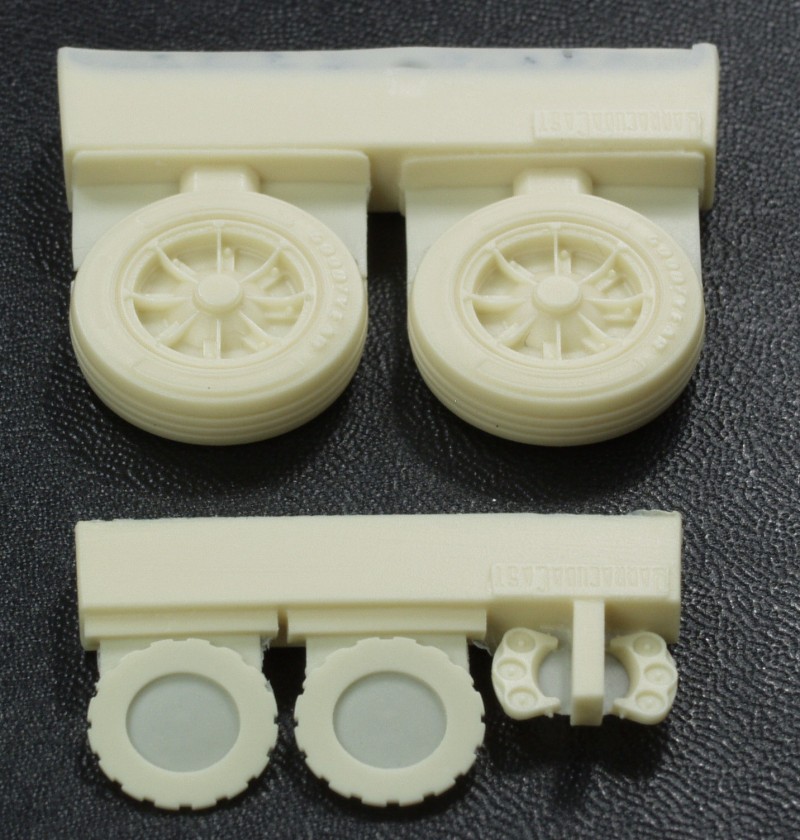
Conclusions
This has to be one of the best 1/32 scale kits to come from Trumpeter, well detailed, good fit and no hidden issues to cause you grief. recommend for modelers of most skill levels except beginners.
Links to kit build or reviews
A build can be found here.
References
History courtesy of Wikipedia
Back to the 1/32 U.S. Aircraft Page